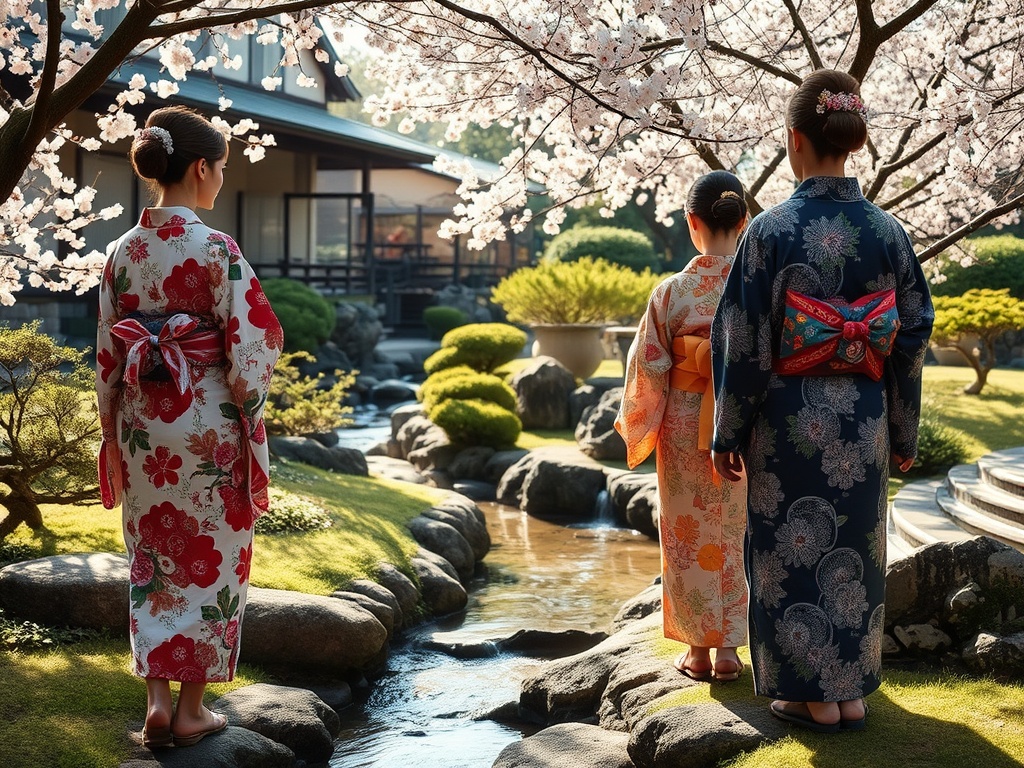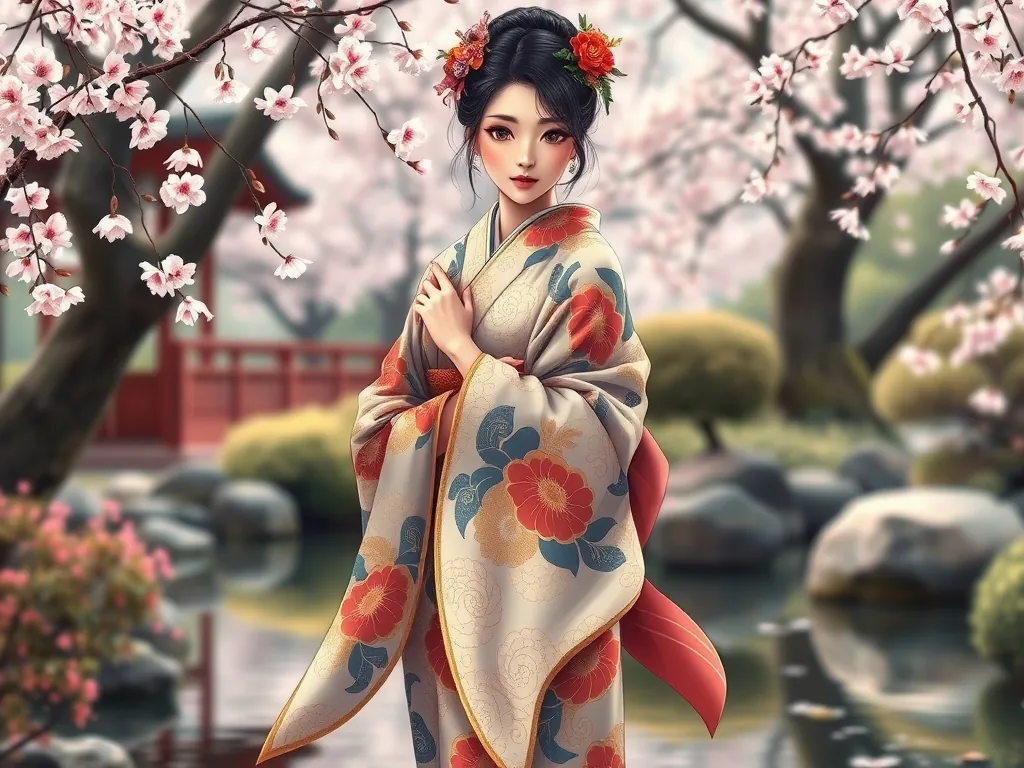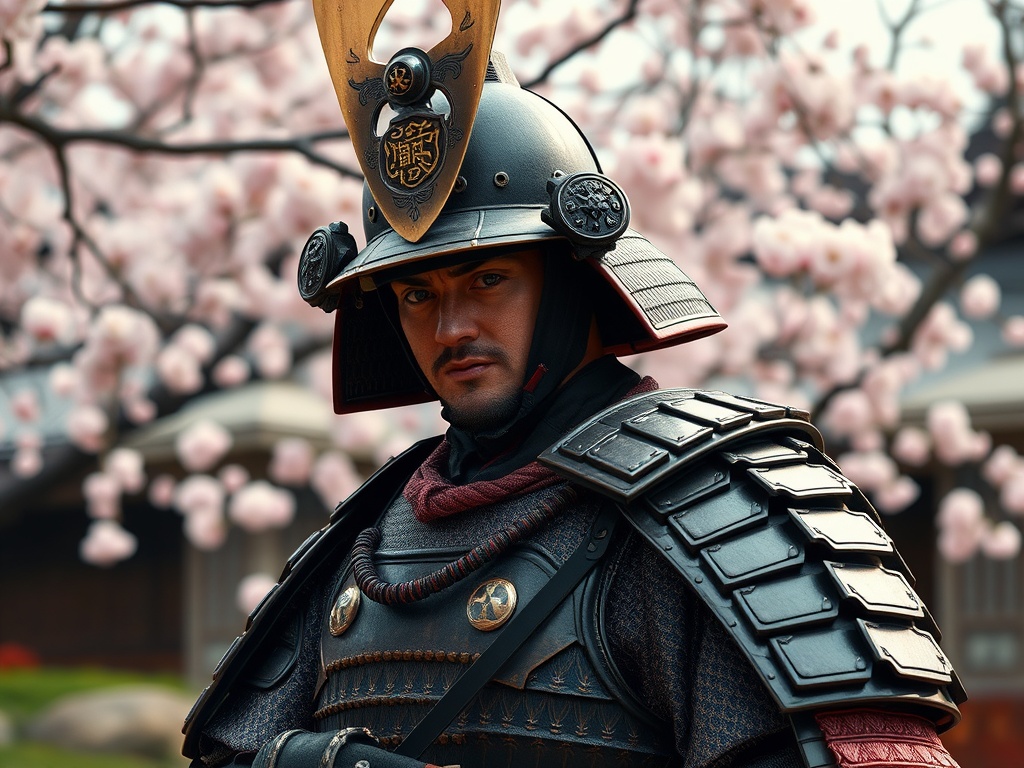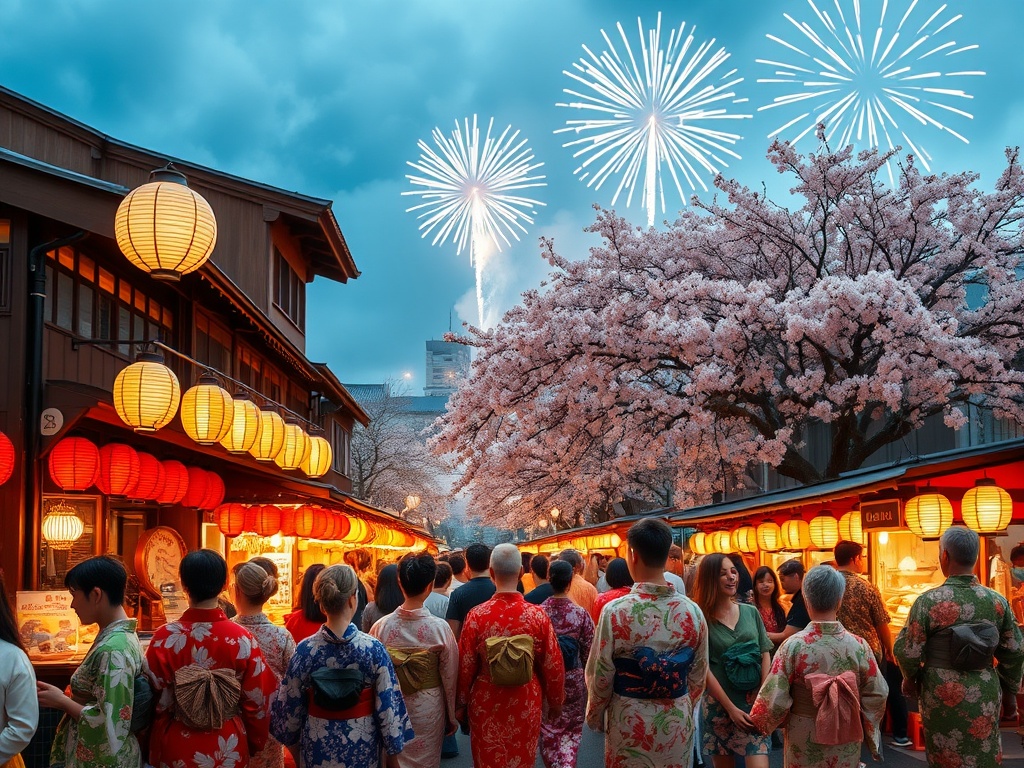Kimono Chronicles: Unraveling the Elegant Layers of Tradition

Journey into the world of traditional Japanese attire, where each thread tells a story and each layer whispers secrets of the past. The kimono, Japan’s iconic garment, is a vibrant tapestry of culture and history, a symbol of elegance that has withstood the test of time. From ceremonial events to everyday wear, the kimono embodies the harmonious blend of artistry and function, inviting travelers to delve deeper into its enchanting folds.
To the untrained eye, a kimono might appear as a single piece of clothing, but it is actually composed of multiple intricate layers, each with its own significance and purpose. Understanding these components is key to appreciating the kimono’s complexity and beauty.
- Koshi-himo: A simple sash that holds the kimono in place.
- Naga-juban: An undergarment worn beneath the kimono.
- Obi: The wide belt that is wrapped around the waist and tied in the back, often elaborately decorated.
- Obi-age: A cloth used to hold the obi in place.
- Obi-jime: A decorative cord tied around the obi.
Wearing a kimono is an art form in itself, governed by etiquette and tradition that vary according to the occasion. Whether attending a formal tea ceremony or enjoying a festive celebration, knowing the right way to wear a kimono enhances the experience and shows respect for Japanese culture.
Formal Occasions: For weddings or tea ceremonies, wear a furisode, characterized by its long sleeves and vibrant patterns, symbolizing the elegance of youth.
Casual Gatherings: A yukata, a lighter, more casual kimono, is perfect for summer festivals, allowing for comfortable movement and a relaxed atmosphere.
By embracing the kimono, you are not only wearing a garment but also participating in a living tradition that continues to connect Japan’s past with its future.
Samurai Style: Armor and Attire of the Fearless Warriors
Venture into the realm of the samurai, the legendary warriors of Japan whose distinctive armor and attire reflect a rich tapestry of martial history and cultural significance. The samurai’s dress was not merely for protection in battle; it was an embodiment of their unwavering spirit, status, and honor. Each piece tells a tale of valor and tradition, inviting travelers to explore the deeper meanings behind the iconic silhouette of these fearless warriors.
Samurai armor, known as yoroi, was a marvel of both engineering and artistry. Crafted to provide maximum protection while allowing for agility and movement, each component served a vital role in the warrior’s attire. Below are some essential elements of a samurai’s armor:
- Kabuto: The intricate helmet, often adorned with symbolic crests and emblems, designed to protect the head.
- Do: The chest armor, constructed from iron plates or leather, offering robust protection for the torso.
- Kote: Protective arm covers, allowing dexterity while safeguarding the wearer’s arms.
- Haidate: Thigh guards, ensuring mobility and defense during combat.
- Sode: Shoulder guards that provide additional protection and a grander appearance.
The attire of a samurai was not just about protection; it was also a visual representation of their rank and family lineage. The colors, materials, and designs used in their armor often indicated the samurai’s allegiance and social status. For instance, a brilliant array of colors might signify a warrior of high standing, while the family crest, or mon, emblazoned on their armor would denote their clan’s identity and honor.
Beyond the battlefield, samurai attire took on a more ceremonial role, reflecting the gravitas and decorum of the warrior class. During peaceful times or formal occasions, samurai would don kamishimo—a distinctive outfit featuring wide-shouldered vests and long hakama pants, symbolizing their readiness and dignity. This attire was not only practical but also a testament to the samurai’s esteemed place within Japanese society.
Yukata Yonder: Discovering the Casual Charm of Summer Festivals
As the warm embrace of summer descends upon Japan, the vibrant festivals beckon travelers with their kaleidoscope of colors, sounds, and flavors. At the heart of these celebrations lies the yukata, a garment that perfectly captures the essence of Japanese summer. Unlike the more ceremonial kimono, the yukata is a symbol of simplicity and comfort, offering a breezy elegance that invites wearers to partake in the joyous festivities.
The yukata, a lightweight cotton robe, is often adorned with vibrant patterns and hues that reflect the season’s splendor. It is a garment that resonates with the rhythm of summer, making it a popular choice for both locals and tourists during the matsuri, or festivals. The ease of wearing a yukata, with its straightforward wrapping and tying, allows individuals to immerse themselves in the festivities without the complexity of traditional kimono attire.
Wearing a yukata is more than just donning a piece of clothing; it’s about embracing a lifestyle that celebrates the beauty of simplicity. As festival-goers stroll through bustling streets illuminated by lanterns, the soft rustle of the yukata fabric serves as a gentle reminder of the harmony between tradition and modernity.
Summer festivals in Japan are a symphony of sights and sounds, each one unique in its offerings yet universally united by the spirit of celebration. From the famous Gion Matsuri in Kyoto to the spirited Awa Odori in Tokushima, these events provide the perfect backdrop for the yukata’s casual charm. The garment becomes a canvas that mirrors the festival’s vibrancy, with patterns often depicting nature-inspired motifs such as cherry blossoms, fireworks, and flowing rivers.
Participating in a summer festival while dressed in a yukata offers travelers a chance to dive into local culture and witness the joyous gatherings where tradition and community intertwine. As the rhythmic beats of taiko drums fill the air and the sweet aroma of festival treats wafts through the streets, the yukata-clad revelers move gracefully, embodying the spirit of summer in Japan.
Obi Odyssey: The Art and Intricacy of Japanese Sashes
Embarking on an obi odyssey offers travelers an enriching exploration of Japanese culture, where each sash unfurls a story woven with artistry and tradition. The obi is more than a mere accessory; it is a masterpiece that elevates the kimono to new heights of elegance. As you traverse the enchanting world of Japanese attire, understanding the significance and craftsmanship behind these vibrant sashes enhances your journey.
The obi is a canvas of creativity, where skilled artisans pour their heart and soul into creating intricate designs that captivate the eye. Crafted from luxurious fabrics such as silk or brocade, each obi is a testament to the meticulous craftsmanship that defines Japanese textile artistry. The process involves dyeing, weaving, and embroidery, resulting in a visual spectacle that complements the kimono’s grace.
Not all obis are created equal; they vary in length, width, and design, with each type serving a unique purpose. The maru obi, with its elaborate patterns on both sides, is reserved for formal occasions, while the fukuro obi offers a slightly more understated elegance. Tying the obi requires a skillful hand, as the knot itself is an art form, symbolizing not just beauty but also the wearer’s status and occasion.
A journey through the world of obis reveals the stories and symbolism embedded within each piece. Patterns often draw inspiration from nature, mythology, or historical events, transforming the obi into a narrative thread connecting the wearer to Japan’s rich heritage. The colors and motifs chosen for an obi can denote seasons, celebrations, or even personal sentiments, offering a glimpse into the wearer’s world.
The artistry of the obi comes alive during traditional performances or ceremonies, where the sash plays a crucial role in the visual storytelling. As dancers move gracefully across the stage, the obi accentuates their movements, creating a harmonious blend of motion and color that captivates audiences. For travelers, witnessing this spectacle is an invitation to delve deeper into the cultural tapestry of Japan.
Geisha Glamour: Decoding the Enigmatic Beauty of Maiko Attire
Step into the enchanting world of maiko attire, where the beauty of tradition is woven into every fabric and the allure of geisha culture captivates your senses. The maiko, known as apprentice geisha, embody the vibrant elegance of Kyoto’s cultural heritage. Their attire is not just a costume; it is a living canvas that tells stories of grace, dedication, and artistic expression. For travelers eager to explore the deeper layers of Japanese culture, understanding the intricacies of maiko attire offers an unforgettable glimpse into this enigmatic world.
The attire of a maiko is a feast for the eyes, filled with vivid colors and intricate patterns that symbolize different stages of her journey. Each layer of clothing, from the kimono to the ornate obi, is carefully chosen to reflect the seasons, the occasion, and the maiko’s status. The kimono, often adorned with motifs of cherry blossoms or cranes, is a stunning display of craftsmanship and culture, while the obi serves as a striking centerpiece, tied in elaborate knots that showcase the wearer’s skill and elegance.
The maiko’s ensemble is completed with a dazzling array of accessories, each holding its own significance. The kanzashi hairpieces, made from delicate silk flowers or tortoiseshell, are meticulously arranged to complement the maiko’s hairstyle, which itself is a work of art. As the maiko glides through the streets of Gion, her attire becomes a moving masterpiece, drawing the attention of all who witness her.
When a maiko performs, her attire plays a crucial role in the storytelling, enhancing her movements with grace and flair. The long sleeves of her kimono, known as furisode, sway elegantly as she dances, emphasizing each gesture and creating a visual symphony that captivates audiences. The vibrant colors and dynamic patterns of her garments become an extension of her expression, painting a vivid picture of the stories and emotions conveyed through the dance.
For travelers seeking to immerse themselves in the world of the maiko, attending a traditional performance or visiting a geisha district offers a rare opportunity to witness the artistry and elegance of these cultural icons. As you observe the maiko’s attire in action, you gain a deeper appreciation for the dedication and skill required to maintain this cherished tradition, bridging Japan’s past with its present.
Hakama Heritage: From Martial Arts to Ceremonial Splendor
Embark on a captivating journey through the history and significance of the hakama, a traditional Japanese garment that seamlessly blends functionality with elegance. Often associated with martial arts, the hakama is much more than just a piece of clothing; it is a symbolic link to Japan’s cultural heritage and a testament to the country’s rich traditions. Whether worn in the dojo or at a formal ceremony, the hakama invites travelers to discover the layers of meaning and artistry woven into its fabric.
The hakama is deeply rooted in the world of Japanese martial arts, where it is cherished for its practicality and symbolic value. Practitioners of aikido, kendo, and other martial disciplines don the hakama as part of their training attire, a tradition that underscores the garment’s enduring legacy. In these settings, the hakama is not just a uniform; it is an integral part of the martial journey, representing the discipline and respect that define the warrior’s path. The pleats of the hakama, often seven in number, are said to symbolize the virtues of a samurai, such as courage, honor, and benevolence, offering a constant reminder of the ethical principles that guide martial artists.
As martial artists move with precision and grace, the flowing fabric of the hakama accentuates their movements, creating a visual harmony that reflects the balance between strength and serenity. For travelers interested in exploring the martial arts culture of Japan, witnessing a practice session or attending a demonstration offers a fascinating glimpse into the dynamic interplay between tradition and modernity.
Beyond the realm of martial arts, the hakama finds its place in the realm of ceremonial attire, where it is worn during significant cultural and religious events. In these contexts, the hakama serves as a symbol of dignity and formality, often paired with a kimono to create a striking ensemble. Whether attending a traditional wedding, a coming-of-age ceremony, or a tea ceremony, the hakama is a garment that embodies the reverence and solemnity of the occasion.
The use of hakama in formal settings highlights its versatility and timeless appeal, offering travelers a chance to experience the garment’s transformative power. As you immerse yourself in these ceremonies, the hakama becomes a gateway to understanding the cultural nuances and values that continue to shape Japanese society. Observing the meticulous attention to detail in the way the hakama is tied and worn provides insight into the profound respect for tradition that permeates every aspect of Japanese life.
From Geta to Zori: Stepping into the Soleful World of Japanese Footwear
As you wander through the intricate tapestry of traditional Japanese attire, your journey would be incomplete without stepping into the fascinating realm of footwear that has adorned the feet of Japanese people for centuries. From the clack of wooden geta to the soft embrace of zori, these iconic shoes offer more than just protection for the soles; they provide a window into Japan’s cultural heritage and the nuances of its social customs. For travel and tourism enthusiasts, exploring the distinct styles of Japanese footwear is a step towards understanding the deep-rooted traditions and everyday practices that define Japan’s unique fashion landscape.
Worn with both traditional and casual clothing, geta are elevated wooden sandals that create a distinctive clacking sound as they strike the ground. This rhythmic music is a familiar melody in Japan’s bustling streets, especially during festivals. Originally designed to keep kimono hems off the muddy roads, geta have evolved into a stylish accessory that speaks to the wearer’s personality and occasion. The height of the geta not only provided practical benefits but also symbolized social status in historical Japan. Today, they serve as a nostalgic emblem of tradition, often worn during summer festivals alongside yukata, creating a perfect blend of comfort and cultural authenticity.
In contrast to the robust geta, the zori offer a more refined and elegant look, often crafted from woven fabric or leather. These flat sandals are synonymous with formal occasions and are typically paired with the more sophisticated kimono. Zori’s design is inspired by the natural shape of the foot, offering both comfort and support. The subtle sophistication of zori is enhanced by their delicate straps, which come in various colors and patterns, allowing wearers to express their individual style. Whether attending a wedding or a tea ceremony, slipping into a pair of zori is an invitation to embrace the graceful traditions of Japanese culture, adding a touch of elegance to the ensemble.
As you explore the world of Japanese footwear, each step you take is a journey through time, where the echoes of history resonate through the cobblestones of modernity. Whether it’s the sturdy geta or the graceful zori, these shoes are more than mere accessories; they are a testament to the enduring beauty and functionality that define Japanese fashion. For those seeking to immerse themselves in the cultural tapestry of Japan, understanding the significance of traditional footwear offers a deeper connection to the past and a richer appreciation of its living traditions.
Textile Tales: The Symbolism and Stories Woven into Japanese Fabrics
For travel and tourism enthusiasts delving into the world of traditional Japanese dress, understanding the textiles is akin to discovering the heart of the culture itself. Each fabric carries with it a legacy of stories and symbolism, inviting travelers to explore the deeper meanings behind the patterns and textures that make up Japan’s rich sartorial tapestry. As you wander through the fascinating layers of Japanese attire, allow the intricate threads to guide you through tales of nature, history, and artistry.
Japanese fabrics are renowned for their symbolic motifs, each selected with intention and steeped in cultural significance. From the delicate cherry blossoms of spring to the majestic cranes symbolizing longevity, these patterns are more than mere decoration. They are a visual language that conveys wishes, emotions, and stories. Understanding these motifs enhances the traveler’s journey, offering a glimpse into the values and beliefs that shape Japanese society.
- Common Symbolic Motifs in Japanese Fabrics:
- Cherry Blossoms (Sakura): Representing the transient beauty of life.
- Cranes (Tsuru): A symbol of longevity and good fortune.
- Waves (Nami): Emblematic of strength and resilience.
- Pine Trees (Matsu): Signifying steadfastness and endurance.
The art of weaving in Japan is a cherished tradition passed down through generations, each region boasting its own distinct techniques and styles. From the luxurious Nishijin weaving of Kyoto to the earthy textures of Shibori tie-dyeing, these textiles are a testament to the skill and dedication of the artisans who create them. Travelers have the unique opportunity to witness these crafts firsthand, whether visiting a traditional workshop or engaging in a hands-on textile experience.
Through these interactions, one can appreciate the meticulous process that transforms raw materials into stunning works of art. The vibrant hues, intricate weaves, and detailed embroidery tell stories of the landscape, history, and people, providing a tactile connection to Japan’s cultural heritage.
While deeply rooted in tradition, Japanese textiles also embody innovation, reflecting a dynamic interplay between the past and present. The evolution of fabric-making techniques over centuries has led to the creation of modern textiles that retain the essence of their historical counterparts. This fusion of old and new invites travelers to explore a culture that honors its heritage while embracing change.
As you journey through Japan, from bustling cities to serene countryside, the textiles you encounter will serve as a narrative thread, weaving together the diverse facets of Japanese life. Each piece is a chapter in the story of a nation that cherishes its past as it moves forward into the future, offering a rich tapestry of discovery for those who choose to unravel its elegant layers.


